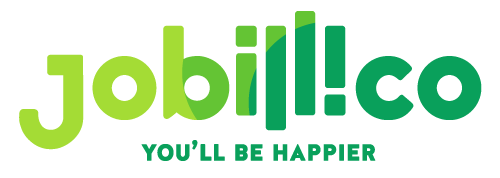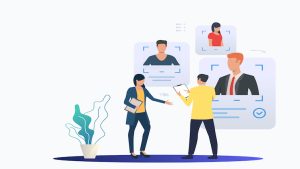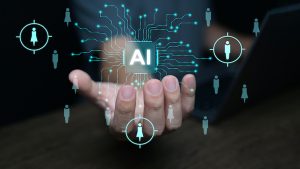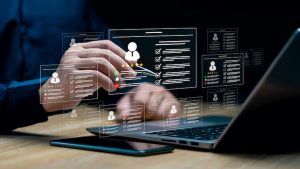10 Effective Tips To Build A Culture Of Continuous Learning
 Publié le 9 January 2025
Publié le 9 January 2025
Help employees and colleagues continue to grow and develop professionally by using 10 effective tips to build a culture of continuous learning in your workplace.
Studies show that approximately 59% of the workforce claims that there is little to no workplace training and upskilling and that most of their skills were self-taught or learned on the job.
Furthermore, 74% of employees have shown an inclination toward learning new skills and honing the ones they already possess. This concludes that most employees are willing to learn and that companies should work on designing continuous learning programs for their overall workforce.
Continuous learning lets businesses adapt to change, gives you a cut above the rest, and adds to your knowledge repository. Once you learn the ropes, know how to harness the power of continuous learning, and understand how to cultivate the culture of continuous learning, there is no looking back.
Incorporating a culture of learning in any organization brings continuity in profit margin achievements, personal and professional growth, and employability. Here’s how-
10 Effective Tips To Build A Culture Of Continuous Learning
Recognizing the gap between your knowledge base and the workforce and bridging the gap is imperative for growth and staying relevant. So you must-
1. Lead by example with leadership participation
Showcasing the effectiveness of continuous learning helps create a sturdy and robust learning culture within your organization. And you always lead by example.
With leadership training or leadership test, managers adopt better behaviors and influence organizational outcomes. Plus, your employees will be motivated and encouraged to incorporate a culture of continuous learning if they see leadership involvement and participation. It builds trust, sets clear guidelines and expectations, and most importantly, creates a positive learning environment for the organization’s workforce. So, be willing to model the behavior you expect from your team.
Creating a culture of continuous learning, with leadership participation, builds a strong, anchored, and structured labor force that is well-equipped and updated with the current corporate knowledge trends.
For instance, Spotify promotes and exhibits such continuous learning. They offer voluntary training programs to leadership to help them upskill and enhance their knowledge base. They do this by:
- Creating knowledge resources
- Developing e-learning modules pertinent to the job
- Implementing target-based learning scores
To sow the seeds of the culture of learning, they developed the Manager Manifesto, where they believe-
- “In purpose-driven leadership
- In managers who have the willingness and courage to lead
- In managers who build and run healthy teams
- That leadership is a group sport”
When superiors work towards growth, they can support their teams in performing and participating in such programs.
2. Provide access to diverse learning resources
Making diverse learning resources available to employees is the building block of a continuous learning structure at a workplace. Why? It’s the key to unlocking their potential and allowing them to propel themselves to greater professional heights.
A company’s success is directly proportionate to its employees’ knowledge. Therefore, the organization must make learning resources accessible to its employees.
Providing access to an in-depth knowledge bank lets your employees deep dive into a skill they wish to build on. It paves the way for successful collaborations, knowledge preservation, increased productivity, and knowledge sharing, and drives innovation. These continuous learning modules and blended training programs create a simplified knowledge base that your employees can easily access.
To harness a culture of learning, opting for tools like an enterprise learning management system may be ideal. Because they provide a centralized platform for tracking progress, delivering personalized learning paths, and offering data-driven insights, it’s easier for companies to align training with their business objectives.
3. Encourage peer-to-peer knowledge sharing
Knowledge sharing builds a culture of learning and trust. Its importance is seldom undermined as many organizations understand just how important it is for the personal and professional growth and success of the organization and its workforce.
This is a symbiotic process that encourages:
- Knowledge retention
- Promotes innovation
- Boosts productivity
- Sets expectations
- Helps take cognizance of individual contributors
- Enhances the client experience.
Top companies like Deloitte, Accenture, IBM, Toyota, and Pratt and Whitney promote such programs and cultivate a robust knowledge-sharing system, too.
IBM’s knowledge classification module implementation of a process to manage, create, store, and share knowledge among peers and colleagues is a great example.
4. Set clear learning goals and objectives
There is plenty of evidence to show that research-driven companies that set clear learning goals and objectives become pioneers of innovation and lead by example. Some of their objectives include:
- Clear Communication
- Research and analysis
- Tracking learning progress
- Outcome relativity
- Drive and motivation
- And to identify the SWAT (strengths, weaknesses, achievements, threats) module
For example, Microsoft’s culture of innovation is at the heart of its growth. This dedication has led to a well-managed and highly-skilled workforce that is confident of their abilities and can implement them toward individual and organizational growth.
But what’s interesting is that they extend it to alumni, too, with the Microsoft Global Hackathon, which garnered over 73,000 participants in 2023. Their reason?
5. Integrate learning into daily workflows
Allocating time for employee engagement strategies like learning activities soothes the effort of focusing all their energy on work. It stimulates the mind, which, in turn, increases productivity. To further enhance learning integration and productivity, consider using an AI meeting assistant to streamline team discussions and capture key insights from collaborative learning sessions.
Here are a few ways to ensure a smooth integration of learning into daily workflows-
- Create relevant content
- Assign time in between shifts
- Create deadlines
- Make it interesting and challenging
- Design workflow-specific content
- Keep it user-friendly
- Make it accessible across verticals
And there’s no reason to avoid learning. Roger Rosner — Apple’s VP of Applications, shares that he spends roughly 30% of his time on learning and about 15% on teaching.
6. Offer rewards and recognition for learning achievements
Challenges are met with encouragement and motivation when you add an element of recognition and rewards. It boosts the employee’s morale, encourages them to do better at work, and gives the job their 100 percent.
If there is an incentive attached to the targets and goals, your team will look forward to learning achievements and contribute to the continuous learning model. A great way to encourage this pattern is to gift custom jerseys, customized mugs, personalized stationery, and even gift certificates. What does this do? One might ask. For starters, it gives your workforce something to look forward to and inspires them to overachieve.
Salesforce, Google, Unilever, Cisco, Disney, and Southwest Airlines are great examples of companies that bolster the continuous learning program by offering their employees the impetus to do better with incentives and customized gifts.
Southwest Airlines demonstrates a robust attitude toward learning based on employee appreciation and recognition with multiple programs to let employees know they are valued and recognized. These include:
- SWAG (Southwest Airlines Gratitude) Program
- Winning Spirit Award
- President’s Award
7. Allocate dedicated time for learning activities
Time is an important aspect of an employee’s workflow. A good leader exudes time management qualities that cascade directly to their team members. While it is necessary to dedicate resources and content, allocating time for learning activities is equally important. Managers can achieve this by reassigning and dividing work among the team members.
How does this help? It creates positive employee engagement, brings change, breaks the monotony, enhances workflows, and allows equal work distribution.
The importance of time allocation and management shouldn’t be an afterthought. That’s why, approaching it with tried-and-test techniques is crucial. These include:
- Practicing the Pomodoro technique
- Delegating tasks
- Trying the 80/20 rule
- Automating repetitive tasks
- Using the Eisenhower Matrix
- Prioritizing urgent tasks
- Using technology to track and manage time
8. Foster a safe environment for experimentation
The outcome of experimentation can be phenomenal and using this freedom coupled with the right resources can help you succeed without repeating mistakes.
A good leader allows room for experimentation and creates an atmosphere of trust and safety, motivating their team members to reach higher levels of success rather rapidly.
So, how does one create and foster a safe environment for experimentation to pursue the quest for continuous learning?
- Generate resources
- Ensure your employees have the right kind of support
- Give constructive feedback and be open to receiving it too
- Cultivate growth and development inclination
- Strategically eliminate potential roadblocks
- Reach out to your employees via direct and indirect communication
- Give them the freedom to find experimental ways of problem-solving
9. Use mentorship programs to guide learners
Mentorship programs are a great way to encourage team bonding, collaboration, and knowledge-sharing. How?
Since it’s an outlined strategy that brings a more experienced employee to share their knowledge with a less experienced employee, it helps foster an atmosphere of trust and inclusion. It also creates the right environment and openness to learning.
A well-structured mentorship program offers growth to the mentor and the mentee.
10. Regularly assess and update learning programs to stay relevant
Information is dynamic. So, you and your team need to stay on top of the game and keep yourself updated with the latest trends and technologies.
According to McKinsey Global Institute, a knowledge management system (KMS) can increase productivity by 20-25%.
So, reassess your knowledge bases and learning programs to stay relevant. Plus, outdated learning programs offer little to no value and growth. Companies can see tremendous growth by regularly updating their knowledge resources and content.
How this helps:
- Adds value
- Implements change
- Allows smoother transitions
- Enhances knowledge-base quality
- Improves workflow
- Updates content and resources to stay with the times
- Aids in measuring knowledge gains
- Highlights training needs identifiers
Start creating a learning culture at your workplace
It’s a given that every successful business fosters a healthy learning culture for its workforce. Using 10 effective tips to build a culture of continuous learning at your workplace encourages growth and minimizes stagnation. This has an overall ripple effect on the company’s growth as well.
A strong and enabled workforce directly represents the organization’s capabilities. Remember, it is an ongoing process unique to each business. But-
- Rewards and recognition can engage your employees and propel a learning culture.
- Encouraging active learning, making resources available, giving constructive feedback, and creating engagement opportunities are non-negotiables.
- Allocating enough time for your employees to upskill and enhance their already existing skillsets and accomplishments can increase participation and improve results.
Want only the best talent for your organization? Post a job today!







